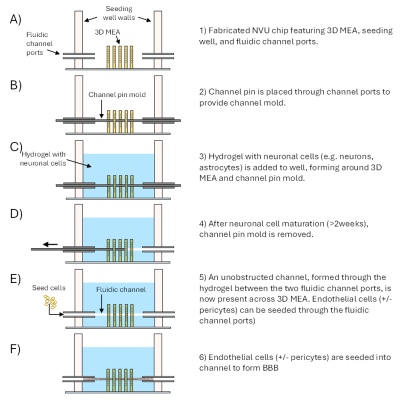LLNL inventors have developed a proprietary concept and a prototype NVU device that provides an effective in vitro model of the BBB to discover, develop and screen drug candidates for their ability to cross the BBB. The device could also be useful in studying neurological disorders with defects in BBB to understand the mechanism underlying the pathology of the disease that might…

LLNL researchers have designed and developed a novel high-density, high-channel count 3D connector that enables hundreds or thousands of nonpermanent connections within a compact footprint. The connector addresses limitations of currently used conventional approaches that were described previously, which have an artificial ceiling on the number of recording sites of modern devices of no more…
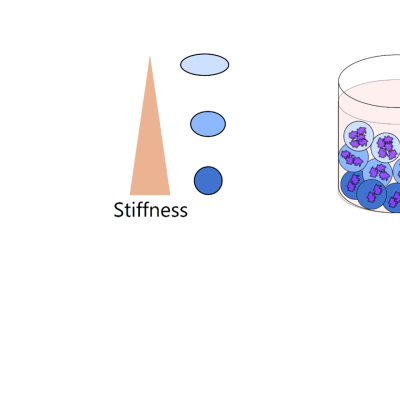
LLNL researchers have enhanced and expanded the IDEA technology, which fabricates micron-scale droplets that are then crosslinked in-air (within milliseconds) using a UV light source before collection. An aerodynamically shearing air jet or acoustic vibration force causes rapid droplet formation.

Many of the disadvantages of current interface devices can be overcome with LLNL’s novel interface design, which relies on area array distribution where independent interface connector subassemblies are positioned in a planar grid. Not only is the interface device expandable area-wise (without increasing contact force), but it could also be expanded height-wise, with multiple layers of…

To replicate the physiology and functionality of tissues and organs, LLNL has developed an in vitro device that contains 3D MEAs made from flexible polymeric probes with multiple electrodes along the body of each probe. At the end of each probe body is a specially designed hinge that allows the probe to transition from lying flat to a more upright position when actuated and then…

Commercial fiber optic cables are the current standard for carrying optical signals in industries like communications or medical devices. However, the fibers are made of glass, which do not have favorable characteristics for applications that require flexibility and re-routing, e.g. typically brittle, limited selection of materials, dimension constraints.
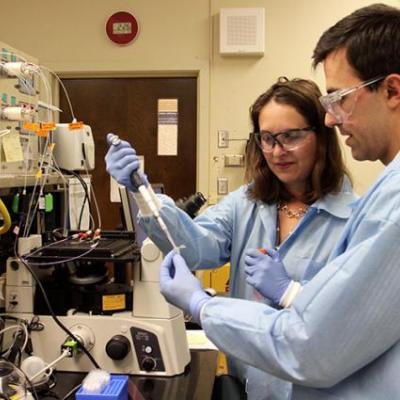
LLNL scientists have created a technology that utilizes electrical means, instead of optical methods, to (1) provide label-free detection of droplet morphology; (2) manipulate droplet position through trapping and actuation; (3) track individual droplets in a heterogeneous droplet population; and (4) generate droplets with target characteristics automatically without optical intercession. The…
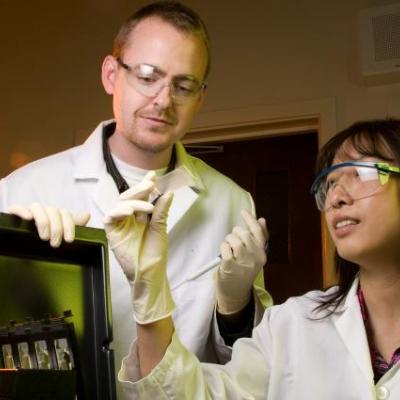
This device allows for observation of single cells encapsulated in droplets and provide the ability to recover droplets containing a cell of interest. This system provides the unique capability to monitor droplet contents from a few minutes to hours and overcome the limitations of the fluorescence activated cell sorting (FACS) in the purification of cell populations. The ability of this…
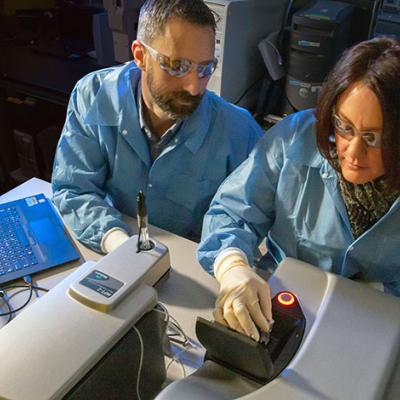
The art described here incorporates a planar integrated optical system that allows for multiple biochemical assays to be run at the same time or nearly the same time. Briefly, each assay can include one or more tags (e.g. dyes, other chemicals, reagents) whose optical characteristics change based on chemical characteristics of the biological sample being tested.
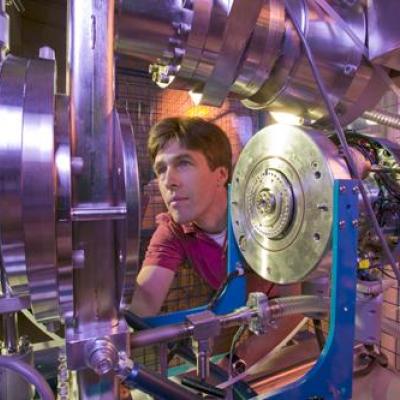
LLNL researchers have developed a variation of AMS technology that improves sample preparation, analysis, and cost for AMS. The device involves depositing liquid samples on an indented moving wire and passing the moving wire through a combustion oven to convert the carbon content of samples to carbon dioxide gas in a helium stream. The gas is then directed via a capillary to a high efficiency…
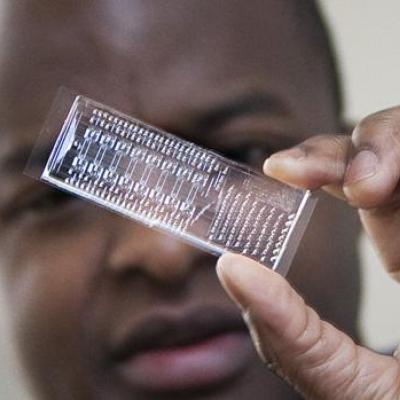
LLNL has invented a new high-throughput assay for sample separation that uses the vibrations of a piezoelectric transducer to produce acoustic radiation forces within microfluidic channels. The system includes a separation channel for conveying a sample fluid containing the different size particles, an acoustic transducer and a recovery fluid stream. The polymeric films containing the…

LLNL researchers have developed an apparatus capable of measuring and recording ultraviolet radiation that uses the Schottky diode/ZnSe/metal type UV sensor. This device can detect both UV-A (320-400nm) and UV-B(280-320nm) radiation. The present invention can also measure and accumulate doses with good sensitivity, and it can also store and make available the readings to be downloaded for…
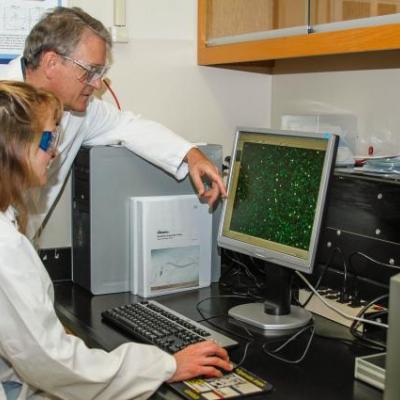
The invention developed by LLNL researchers proposes to use staged isotachophoresis to improve sample separation. One of the problems with isotachophoresis is that there is a tradeoff between the diameter of the separation column and the ability to isolate a species into a detectable band. For example, wider diameter channels run faster, but narrower channels provide better ability to isolate…
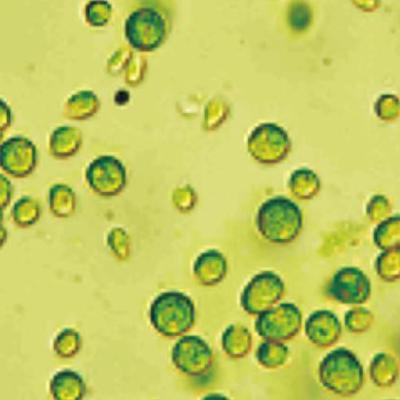
LLNL researchers have devolved a technique to separate or purify samples using electrophoretic separation. This invention corrects the problem associated with pH changes by using the electrode, which contacts the sample, itself a high-conductivity electrolyte made of liquid or gel materials. This will keep the metal surface electrochemistry physically remote from the sample, while…

LLNL's technology employs improved sorting strategies related to chip-based droplet sorting. This technology uses electromagnetic fields and non-contact methods to sort and identify monodispersed water-in-oil emulsion droplets in a microfluidic chip-based device. The system selects individual droplets from a continuous stream based on optical or non-optical detection methods as…

Researchers at LLNL have developed a method to passively sort individual microdroplet samples of uniform size based on stiffness and viscosity. Unlike electrical or optical methods for droplet sorting, this apparatus does not require a measurement step. Instead, particle separation occurs through changes in shearing forces determined by the stiffness of the particles in the microdroplet sample…

LLNL researchers have created a method that uses isotachophoresis for the exclusion and or purification of nucleic acids. Isotachopheresis (ITP) is an electrophoretic separation technique that leverages a heterogeneous buffer system of disparate electrophoretic mobilities. The researchers created a transverse ITP system that offers high-throughput sample preparation as the amount of sample…
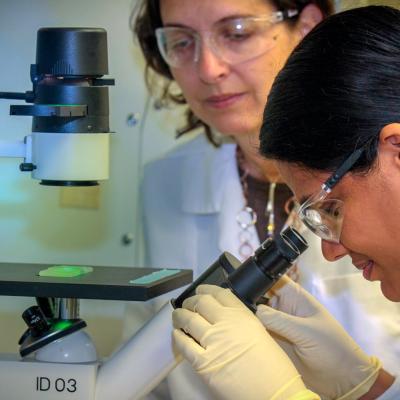
The steady-state phenomenon generates thousands of microdroplets per second which is a problem when the stream of droplets needs to be slowed down or stopped. LLNL technology provides a method for generating and trapping microdroplets at a desired location and subsequently stopping the stream of microdroplets without droplet coalescence. These microdroplets can then be chemically reacted,…
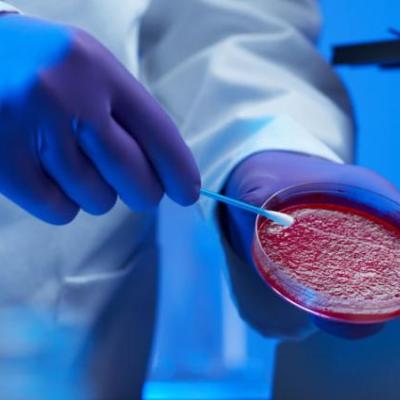
This technology is a photonic detection system developed by researchers at LLNL for the detection of biological or chemical threats with the intention of combining the collection, concentration and detection process onto a single platform. The present invention consists of a porous membrane containing flow-through photonic silicon crystals (see figure).

LLNL scientists have designed a rapid PCR technology that incorporates the use of microfluidic thermal heat exchanger systems and is comprised of a porous internal medium, with two outlet channels, two tanks, and one or more exchanger wells for sample receiving. The wells and their corresponding inlet channels are coupled to two tanks that contain fluid with cold and hot temperatures. A…

LLNL has developed a new technology that provides a method for near-instantaneous heating of aqueous samples in microfluidic devices. The technology relates to a heating method that employs microwave energy absorption from a coincident low power Co-planar waveguide or microwave microstrip transmission line embedded in a microfluidic channel to instantaneously heat samples. The method heat…
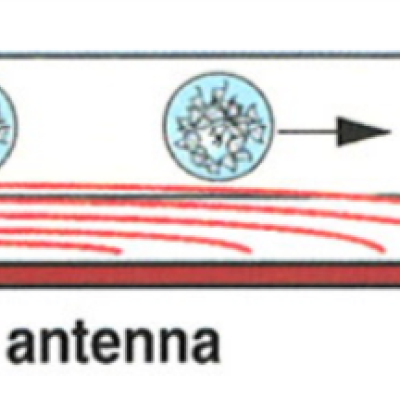
Researchers at LLNL have developed an instantaneous sample heating method to efficiently deposit thermal energy into a continuous stream or segmented microdroplets on a MOEMS device using an optimally low energy, commercially available CO2 laser. The device uses an ideal wavelength (absorption in the far infra-red (FIR) region (λ=10.6 μm)) to instantaneously heat fluidic partitions. The…
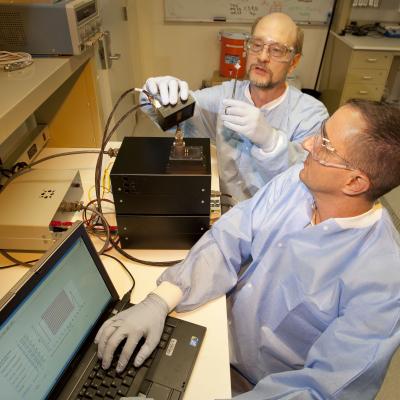
Researchers at LLNL have designed a new technology that allows the integration of a large bench-top thermal cycling instrument onto a miniaturized instrument. This instrument is powered and controlled by portable thumb-drive systems such as an USB. USB thumb-drives are commonly used to transfer data from the instrument onto a PC, however, in this new technology the thumb drive becomes the…

This technology describes a method for performing immediate in-line sample heating to promote the required chemical reactions for amplification, activation, or detection, depending on the thermodynamics of the particular assay involved. The basis of this technology is a method that employ microwave energy absorption to instantaneously heat fluidic partitions without heating the device itself…

LLNL researchers have developed a new method for faster, more accurate, and precise thermal control for DNA amplification. This technology uses sensor-controlled nodes to monitor and cycle materials through a microfluidic heat exchanging system. Thermal energy travels from a power module through thermal electric elements to sample wells. Sensors coupled to each sample well monitor and respond…
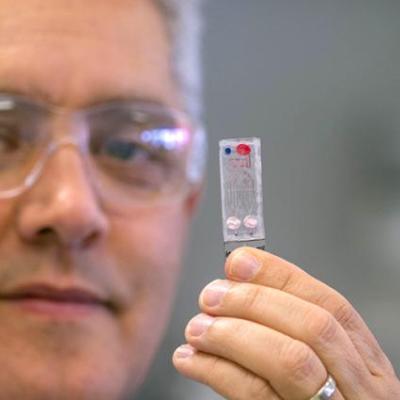
LLNL researchers have developed a portable device which analyzes one or multiple types of body fluids or gases to test for one or more medical conditions. A bodily fluid (such as blood, perspiration, saliva, breath, or urine) is put into a condenser surface and is then separated into both a primarily gas fluid component and a second one that is primarily liquid. These two samples from the same…
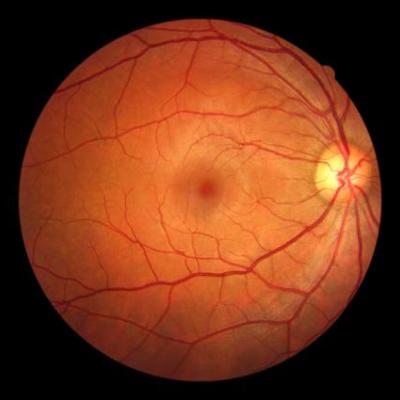
LLNL scientists have developed a method to ensure the accuracy of that tomographic image by applying adaptive optics (AO) to OCT in a single instrument (AO-OCT). AO stabilizes the image being captured by the OCT device by utilizing a Hartmann-Shack wavefront sensor and a deformable mirror, a type of mirror designed to compensate for detected waveform abnormalities (such as ones caused by a…

LLNL has developed a brain-on-a-chip system with a removable cell-seeding funnel to simultaneously localize neurons from various brain regions in an anatomically relevant manner and over specific electrode regions of a MEA. LLNL’s novel, removable cell seeding funnel uses a combination of 3D printing and microfabrication that allows neurons from select brain regions to easily be seeded into…

This technology uses either of two X-ray wave-front sensor techniques, Hartmann sensing and two-dimensional shear interferometry, both of which are capable of measuring the entire two-dimensional electric field, both the amplitude and the phase, with a single measurement. Capturing both the absorption and phase coefficients of the index of refraction can help to reconstruct the image.…
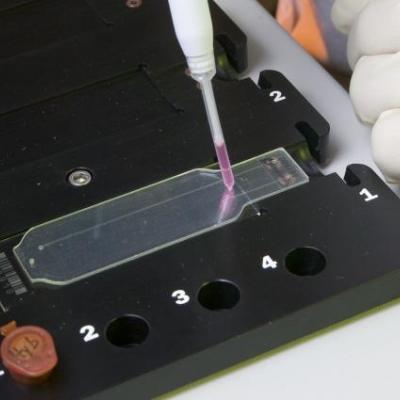
LLNL has developed a technology that provides near-instantaneous heating of aqueous samples in microfluidic devices. The method heats samples in a focused area within a microfluidic channel on miniaturized chips. The microwave heating device is composed of a waveguide or microstrip transmission line embedded in a microfluidic channel. Aqueous solution microwave heating allows extremely fast…

The biotech industry aims to move towards an on-chip system for sample generation, amplification and detection of both DNA and RNA based organisms. LLNL has invented a new way of isolating samples in a system.
This invention enables creation of partitioned fluid "packets" between polymeric sheets for chemical separation, DNA amplification or PCR-based DNA detection. The polymeric…
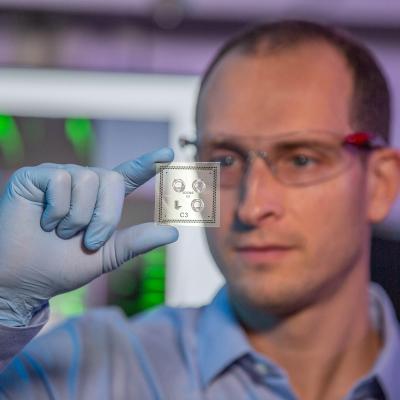
Lawrence Livermore National Laboratory scientists have developed a signal enhancing microchip apparatus and method that enhances a microfluidic detector's limits by magnetically focusing the target analytes in a zone of optical convergence. In summary, samples are associated with magnetic nanoparticles or magnetic polystyrene coated beads and moved down the flow channels until they are trapped…

Using various excitation wavelengths, a hyperspectral microscope takes advantage of autofluorescence and polarized light scattering from cellular components to obtain composite images that highlight their presence. The light collection efficiency is maximized to achieve image acquisition times and rates suitable for in vivo applications.

LLNL’s BioBriefcase is a compact and portable instrument capable of autonomously detecting the full spectrum of bioagents, including bacteria, viruses and toxins in the air. It uses the state of art technologies to collect, process, and analyze samples to detect, and identify genetic and protein signatures of bioagents.


